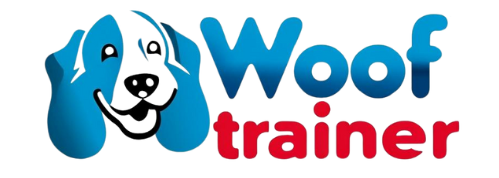For many dog owners, convenience is king. After mealtime, slipping the bowl into the dishwasher seems like a no-brainer—but is it always safe and effective? This article dives deeply into dog bowl maintenance → cleaning methods → dishwasher safety, answering once and for all whether are stainless steel dog bowls dishwasher safe and under what conditions.
Why the Question Matters
Dogs’ food and water bowls can become breeding grounds for bacteria, mold, or biofilms if not cleaned properly. According to the American Kennel Club, pet bowls are among the germiest surfaces at home, ranking just behind sponges, sinks, and toothbrush holders. Regular sanitation is essential not just for your pet’s health, but for household hygiene.
Unlike plastic or ceramic, stainless steel is non-porous and resists odor, staining, and bacterial adherence. Many manufacturers advertise stainless steel dog bowls as dishwasher-safe. For example, Basis Pet explicitly labels their bowls “Dishwasher Safe & Easy to Clean by Hand.” But “dishwasher-safe” is not a universal guarantee—context and proper handling matter.
In practicing dog bowl maintenance, using the dishwasher should be seen as a tool—not a guarantee. Let’s proceed through conditions, caveats, and best practices.
When Stainless Steel Bowls Are Dishwasher Safe
Yes—if certain criteria are met, stainless steel dog bowls can be cleaned in a dishwasher safely and effectively. Key conditions include:
- 100% stainless steel construction (no bonded plastics, rubber liners that cannot withstand heat)
- Food-grade alloy like 304 (18/8 / 18/10)
- No cracks, chips, deep scratches, or structural damage
- Manufacturer explicitly states the bowl is dishwasher-safe
- Using proper cycles (high-temperature, sanitize, heated drying)
- Using pet-safe or mild detergent without harsh fragrances or bleaching agents
Many appliance-manufacturer guides support this. Maytag, for instance, notes that stainless steel bowls are typically dishwasher-safe, but you must ensure they are labeled that way before using the dishwasher. Better Homes & Gardens also reports that experts permit washing stainless pet bowls in dishwashers when done properly, while warning of cross-contamination if not careful.
Real-world practice:
A dog owner places a 304 stainless steel food bowl (without any plastic or glued parts) on the top rack, runs a sanitize/high-heat rinse, and it comes out spotless, sanitized, and ready to reuse. Many pet forums report similar success—>
“I’ve been washing pet bowls in the dishwasher (with the high-intensity wash … never thought much about it). … it’s actually more hygienic … where the water is considerably hotter.” (Reddit)
So yes – the answer is yes, when conditions align.
When Dishwasher Use Should Be Avoided
However, there are cases when you should not place a stainless steel dog bowl in the dishwasher:
- Presence of glued, bonded, or adhesive parts (rubber feet or silicone rings that are not heat-rated)
- Seams, welds, or join lines that may corrode or loosen under repeated heat stress
- Deep scratches, pitting, or cracks where bacteria can lodge and avoid effective sanitization
- Mixed-material bowls (e.g. plastic insert, silicone liner)
- Cheap or unspecified stainless steel where alloy composition or treatment is uncertain
In such cases, hand-washing is safer. Some guides caution that dishwashers can degrade the protective chromium layer if detergent or water chemistry is aggressive, especially with subpar steel.
Additionally, always inspect the bowl label or manufacturer instructions. If the bowl lacks a “dishwasher safe” mark, treat it as hand-wash-only.
Best Practices for Dishwasher Use with Stainless Steel Bowls
1. Pre-Rinse & Remove Food Residue
Before loading into the dishwasher, rinse off leftover food or debris. This reduces leftover particles and ensures detergent contact.
2. Placement in the Dishwasher
- Place bowls on the top rack when possible (to distance them from direct spray arms).
- Larger, heavy stainless steel bowls can go on the bottom rack if the machine can safely accommodate them without blocking spray.
Better Homes & Gardens warns of cross-contamination—if you wash pet bowls with human dishes, ensure the dishwasher’s sanitize cycles and high heat are used to kill all bacteria.
3. Use a High-Heat or Sanitize Cycle
Many washers have a “sanitize” or “high-temperature rinse” option—select this if available. This helps kill E. coli, Salmonella, and other pathogens more reliably than a normal wash.
4. Choose a Gentle, Pet-Safe Detergent
Avoid heavily scented detergents, enzyme formulas, or those with bleaching agents that could leave residue toxic to pets. Even if you can’t taste it, trace residues matter.
5. Ensure Thorough Drying
After the cycle, bowls should come out fully dry (many dishwashers heat-dry). If some moisture remains, air-dry fully before reuse. Dampness encourages bacterial regrowth.
6. Inspect & Rotate
Regularly check for deep scratches or corrosion, and retire any bowl that shows damage. Consider having two sets of bowls—one is always drying or in wash.
Comparison: Dishwasher vs. Hand-Washing
Pros of Dishwasher:
- Higher consistent temperature → better sanitization
- Hands-free convenience, especially for multiple dogs
- Less human error in scrubbing or neglect
Pros of Hand-Wash:
- Better control for delicate bowls (e.g. welded seams, silicone parts)
- Can use targeted scrubbing to reach grooves or ridges
- Less risk of detergent mismatch or cross-contamination
In extreme cases (e.g. when a pet is ill or immunocompromised), manual disinfection (soaking in diluted bleach or pet-safe disinfectant) may be warranted. The How to Properly Clean and Sanitize Your Stainless Steel Dog Bowl resource explores that deeper.
Troubleshooting Common Issues
| Problem | Likely Cause | Solution |
|---|---|---|
| Rust or discoloration after dishwasher use | Harsh detergent or chlorine in water | Switch to milder detergent; run an occasional vinegar/acid rinse |
| Rubber feet melted or loosened | Non-heat-rated bondable parts | Use bowls with heat-safe parts or hand-wash those with delicate features |
| Persistent odors post-wash | Trapped food in ridges or scratches | Soak in baking soda + hot water, then sanitize cycle |
| Water spots or streaks | Hard water deposits | Use a rinse aid or occasional vinegar rinse |
| Bowls tilting / not stable | Uneven base or warping | Replace bowl or hand-wash if warping worsens |
If you’ve already consulted The Ultimate Guide to Stainless Steel Dog Bowls or What to Look for When Buying a Stainless Steel Dog Bowl , you’ll know how material choice and bowl construction affect your dishwasher outcomes.
Summary: The Definitive Take
- Yes, most quality stainless steel dog bowls can be dishwasher-safe—provided they are 100% stainless, well-constructed, and rated for dishwasher use.
- Always check manufacturer labeling and avoid dishwasher use if any plastic, glue, or compromised structure is present.
- Use hot, sanitizing cycles, gentle pet-safe detergents, and full drying to ensure hygienic results.
- Maintain a rotation of bowls and inspect them regularly for damage.
- When in doubt, manual washing remains a reliable fallback.
FAQ
-
Can I wash a slow-feed stainless steel bowl with ridges in a dishwasher?
Yes—if the bowl is fully stainless, built sturdy, and rated dishwasher-safe. Pre-rinsing helps remove debris lodged in ridges. A sanitize cycle ensures deep cleaning. -
Is it safe to wash dog bowls with my human dishes?
It can be safe if you use a high-temperature sanitize cycle, a reliable dishwasher, and pet-safe detergent. But cross-contamination concerns prompt some owners to wash pet bowls on a separate cycle or load. -
Do stainless steel bowls ever degrade from repeated dishwasher use?
Over many years, harsh detergents or chlorine in water could degrade surface chromium protection in lower-quality steel. That’s why choosing quality food-grade stainless and rotating bowls helps. -
My dishwasher doesn’t have a sanitize cycle—should I avoid using it?
You can still use the dishwasher but choose the hottest cycle and ensure full drying. Supplement periodically with manual sanitization (e.g. boiling, vinegar soak). -
Can the detergent leave residue harmful to dogs?
Yes if it is strongly scented, enzyme-based, or contains dyes. Use pet-safe or mild, fragrance-free detergents, and ensure full rinsing and drying. -
What if my bowl has a rubber base or silicone ring?
Only use the dishwasher if those parts are heat-rated. If not, remove the parts (if possible) or hand-wash that bowl. In future, choose bowls with stainless-only construction or high-heat tolerant removable parts.

